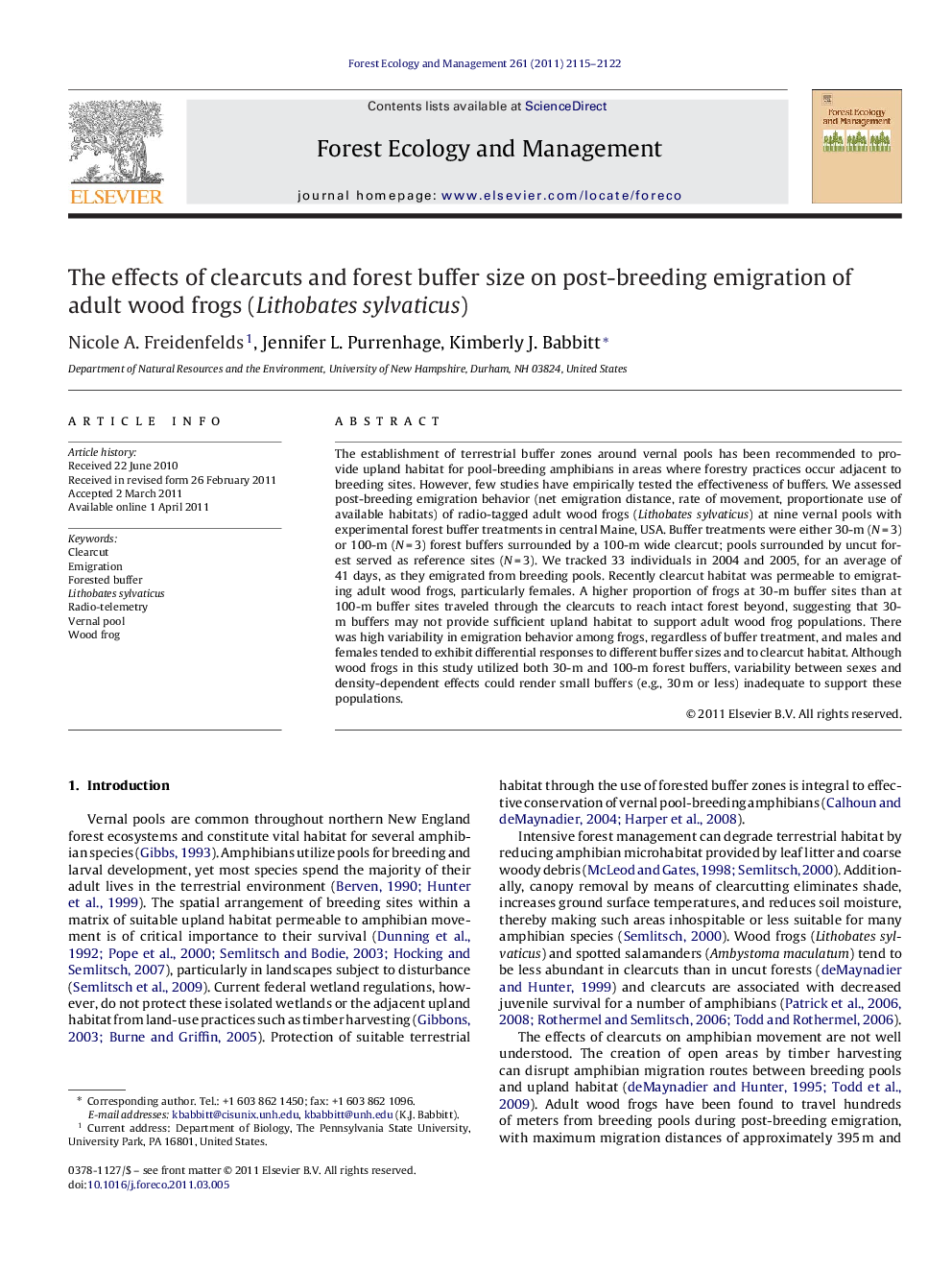| کد مقاله | کد نشریه | سال انتشار | مقاله انگلیسی | نسخه تمام متن |
|---|---|---|---|---|
| 87902 | 159270 | 2011 | 8 صفحه PDF | دانلود رایگان |

The establishment of terrestrial buffer zones around vernal pools has been recommended to provide upland habitat for pool-breeding amphibians in areas where forestry practices occur adjacent to breeding sites. However, few studies have empirically tested the effectiveness of buffers. We assessed post-breeding emigration behavior (net emigration distance, rate of movement, proportionate use of available habitats) of radio-tagged adult wood frogs (Lithobates sylvaticus) at nine vernal pools with experimental forest buffer treatments in central Maine, USA. Buffer treatments were either 30-m (N = 3) or 100-m (N = 3) forest buffers surrounded by a 100-m wide clearcut; pools surrounded by uncut forest served as reference sites (N = 3). We tracked 33 individuals in 2004 and 2005, for an average of 41 days, as they emigrated from breeding pools. Recently clearcut habitat was permeable to emigrating adult wood frogs, particularly females. A higher proportion of frogs at 30-m buffer sites than at 100-m buffer sites traveled through the clearcuts to reach intact forest beyond, suggesting that 30-m buffers may not provide sufficient upland habitat to support adult wood frog populations. There was high variability in emigration behavior among frogs, regardless of buffer treatment, and males and females tended to exhibit differential responses to different buffer sizes and to clearcut habitat. Although wood frogs in this study utilized both 30-m and 100-m forest buffers, variability between sexes and density-dependent effects could render small buffers (e.g., 30 m or less) inadequate to support these populations.
► Width of forested buffers around vernal pools affected wood frog post-breeding emigration behavior.
► A higher proportion of frogs at 30-m buffer sites than 100-m buffer sites traveled through clearcuts to reach forest beyond clearcuts.
► Males and females showed differential response to treatments; in general females traveled farther than males.
► Clearcuts (100-m wide) beyond buffers were permeable to adult wood frogs.
Journal: Forest Ecology and Management - Volume 261, Issue 11, 1 June 2011, Pages 2115–2122